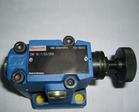Working principle of hydraulic valve

A complete hydraulic system consists of five parts, namely power components, actuator components, control components, non-parts and hydraulic oil. The function of the power element is to convert the mechanical energy of the prime mover into the pressure energy of the liquid. It refers to the oil pump in the hydraulic system, which provides power to the entire hydraulic system. The structure of hydraulic pumps are generally gear pumps, vane pumps and plunger pumps. The role of actuators (such as hydraulic cylinders and hydraulic motors) is to convert the pressure energy of the liquid into mechanical energy and drive the load to perform linear reciprocating or rotary movement. Control elements (ie various hydraulic valves) control and regulate the pressure, flow and direction of liquids in the hydraulic system. According to different control functions, hydraulic valves can be divided into village control valves, flow control valves and directional control valves. The pressure control valve is divided into benefit valve (safety valve), pressure reducing valve, sequence valve, pressure relay, etc. Hydraulic control check valve, shuttle valve, directional valve, etc. According to different control methods, hydraulic valves can be divided into on-off control valves, fixed value control valves and proportional control valves. Auxiliary components include oil tank, oil filter, oil pipe and pipe joint, sealing ring, pressure gauge, oil level oil temperature gauge, etc. Hydraulic oil is the working medium that transfers energy in the hydraulic system. There are various types of mineral oil, emulsion and synthetic hydraulic oil.
Electronic Air Purifier,Air Cleaner Ionizer,Pm 2.5 Air Cleaner,Air Cleaner Dust
Dongguan V1 Environmental Technology Co., Ltd. , https://www.v1airpurifier.com